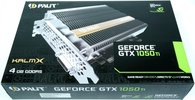
With the GeForce GTX 750 Ti KalmX, Palit already had a first passive candidate at the start and continues this tradition seamlessly with the GeForce GTX 1050 Ti.
But will the new creature really be able to work absolutely passively? There is no doubt that we will not stay there when we remember our article Pascal becomes passive: we build a fanless GeForce GTX 1050 Ti. Without extra air, nothing went (except slightly wrong).
Palit relies on a rather moderate power target for the new card, which can be pinpointed by the lack of an extra power supply connection. Since the board comes from a "normal" Palit GTX 1050 Ti, the soldering eyes for the 6-pin socket are available, but are not used. This also results in the rather moderate clock, which with its 1291 MHz base clock (1392 MHz Boost) is quite modest.
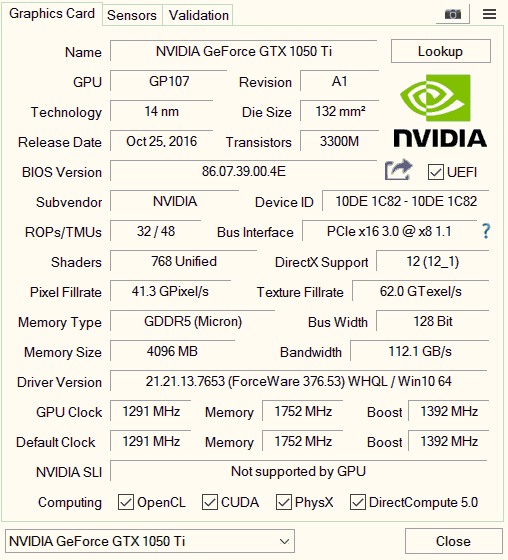
The same applies to the memory, which is operated very conservatively at 1752 MHz. This may also be the reason why Palit decided to leave it uncooled and to rely on pure air circulation.
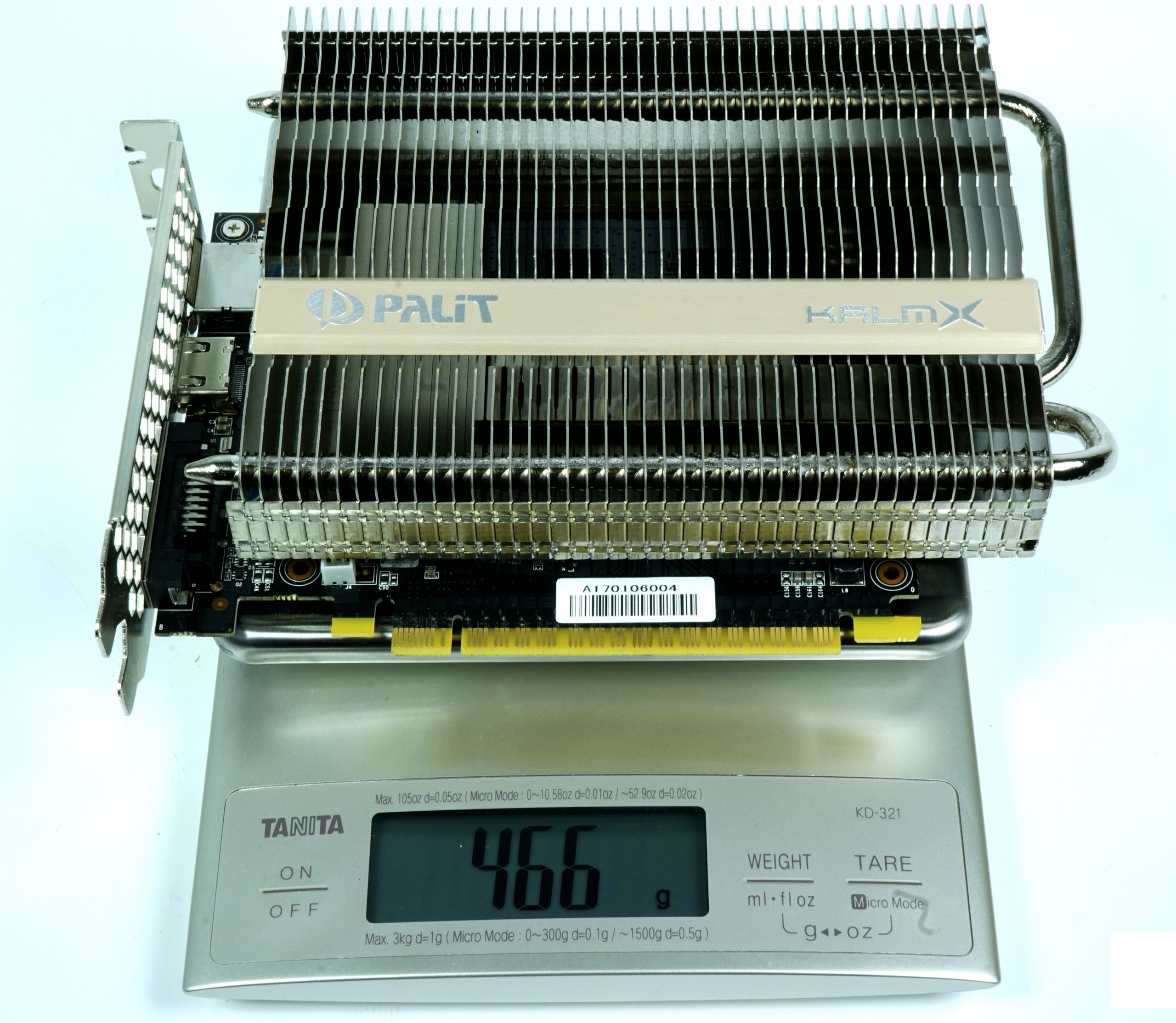
At only 466 grams, the card doesn't weigh too much and the real installation dimensions with a length of 18.3 cm, a height of 13.7 cm and a mounting depth of 3.6 cm make the compact Quiet Treter a small dual-slot card that should fit almost everywhere.
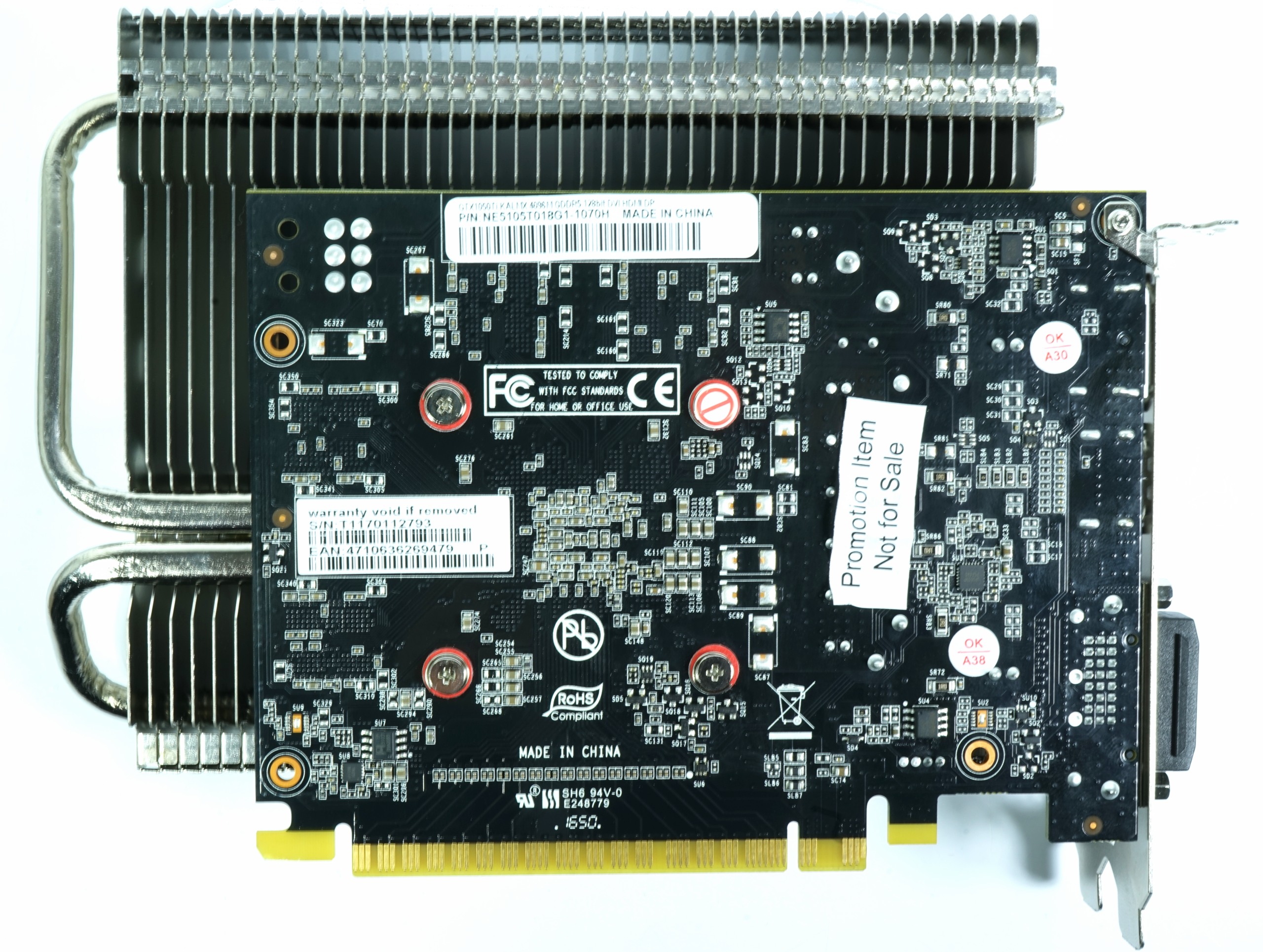 |
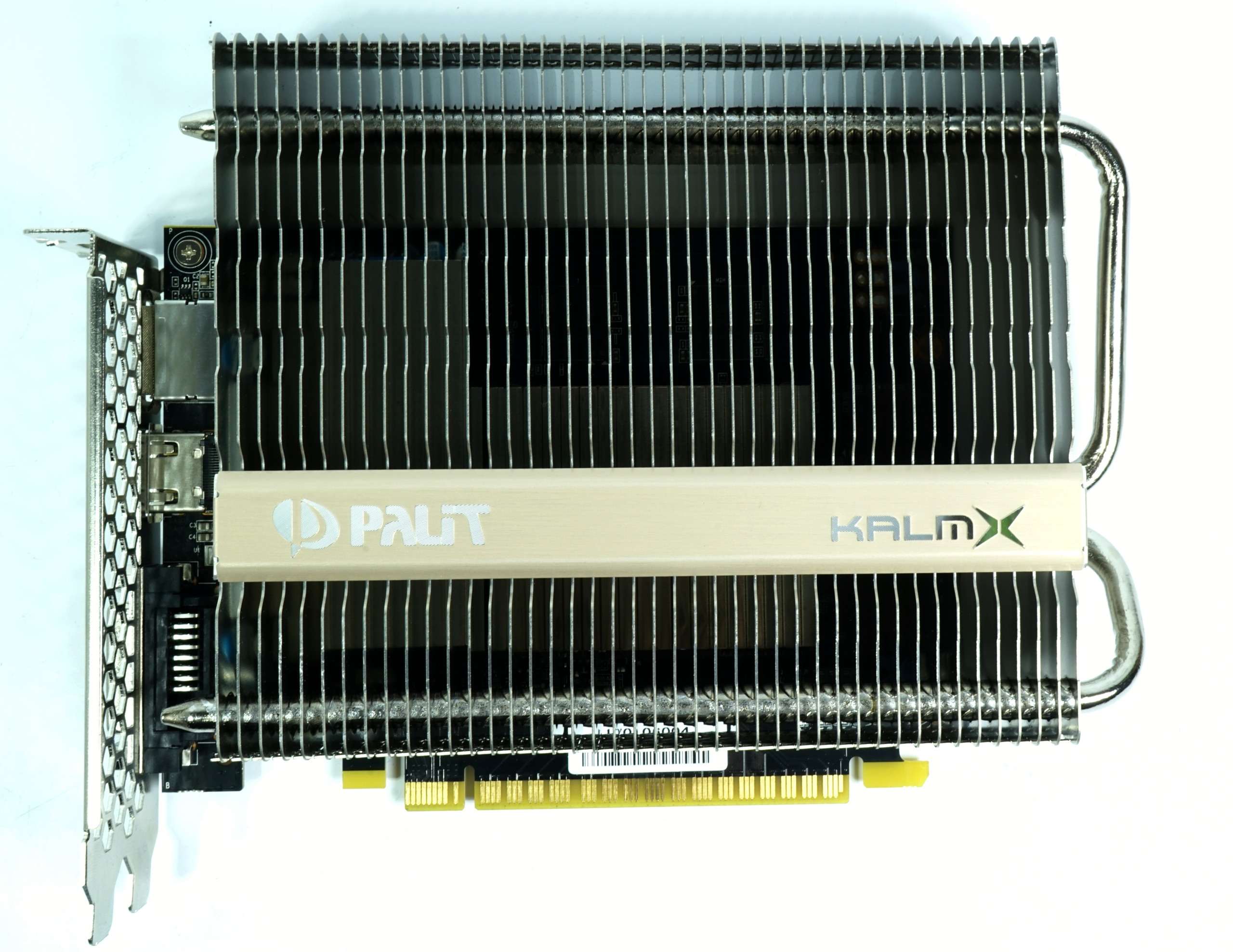 |
Palit has dispensed with a backplate – not least certainly because itx systems could have been in conflict with the CPU cooler.

In order to better distribute the waste heat, Palit again relies on two nickel-plated 6 mm heatpipes, which are seated in a copper heat sink. The heat sink with the pressed aluminum slats protrudes over the end and top edge of the board to allow better air circulation. As with the predecessors, the slats are arranged vertically. This promotes self-convection, but benefits less from a front-mounted airflow in the housing.

However, the vertical orientation is very helpful when the cards are installed standing (e.g. cubes and many mini-ITX solutions). Then horizontally aligned slats, as with the passive Radeon-RX-460 cards of HIS and XFX, are more likely to be left behind.

The slat spacing is quite large, which is typical for passively cooled systems, which must also benefit from natural convection. The direct cooling of the voltage transformers was also well solved. However, the soldered RAM modules remain uncooled. A little airflow in the housing should therefore be present in any case. But we had already found out that in the article linked above.

































Kommentieren